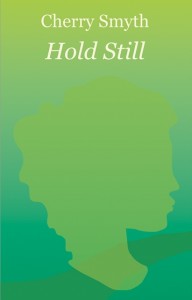 Published Holland Park Press 24 October 2013
Published Holland Park Press 24 October 2013
280pp, paperback
Reviewed by Elizabeth Hilliard Selka
Hold Still is a fictionalized account of the five years between 1861 and 1866 when Joanna ‘Jo’ Hiffernan was involved with James ‘Jim’ McNeill Whistler and other artists, notably Gustave Courbet. Jo Hiffernan was a real person and an artist herself, of whose own work not a single example survives or is known. But any student of art history is familiar with her face, along with those of Jane Burden and Fanny Cornforth (Fanny is another significant character in the novel) from the works of Whistler, Courbet and Dante Gabriel Rossetti. Concepts of beauty change, but even today we can see that all three are eye-catching, with that distinctive and fabulously sensual, strong, lush look, added to which Jo had thick, long, wavy, gloriously red hair. Jo is the girl depicted in Whistler’s famous Symphony in White No.1 – The White Girl, painted in 1862 and now hanging in the National Gallery of Art in Washington DC.
Virginia Woolf would have spotted in Jo Hiffernan a woman badly in need of a room of her own. She has her place in the history of art by virtue of being immortalized by great male artists, but her own life was consumed by hours and days spent sitting and lying completely still, and by housekeeping and managing sales and finances for Whistler, who gave her power of attorney over his affairs when he travelled to South America. She even apparently brought up Whistler’s son by another woman, Charles Hanson. She seems to have been a creative, intelligent and capable woman and Cherry Smyth has done us all a favour by drawing attention to her.
The text of Hold Still is rich with the imagined minutiae of her life with Jim Whistler, how they met, how often they had sex (every night for the first four months we are told, with only withdrawal as a form of contraceptive, so it is surprising she didn’t get pregnant), what they ate and where, the destructive torture of his mother’s extended visit from America, and endless conversations between themselves and with others in their circle including Gabriel, Fanny, Fantin, Alphonse etc etc… There are occasional excitements, such as the establishment of the Salons des Refusés in Paris in 1863, and the out-and-out shouting row when Jo discovers Jim’s infidelity with the maid during Jim’s mother’s visit.
Apart from these few spicy moments the plot is more slow-cooked than sizzling, and there are some frustrations. A biography rather than a novel might better explore the inconsistencies in Jo’s background. How is it that her father, who brought the family fromIrelandin 1844, is both an apparently out-of-work Thames tugboat captain and also a calligrapher? The household appears to be straightforward working class (there are no servants and Jo calls a napkin a ‘serviette’), yet 17-year-old Jo has had drawing lessons and is familiar with the poetry of Baudelaire, and her sister Bridget cooks the family an everyday supper of ‘lamb chops, parsnips and mash with a gleaming lake of gravy’ followed by ‘pear compote’ with cinnamon sprinkled on top. A painting of Jo’s won first prize in a painting competition at Finsbury Town hall, and Jo has worked for Matthew Hill as a copyist and researcher – yet how and where did she train? How could the family afford artist’s materials? Jo is apparently a good book-keeper, and she uses the word ‘palindrome’, but where did she get this education when, we are told, she left school ‘early’.
There is also a problem with the sex in this novel. Jo seems cultured if bohemian and made of stern stuff yet she and Jim have hardly met (socially that is – she has already modelled clothed for his art class) before she’s taking off her kit and asking, ‘Why draw me when you can have me?’ Five lines later and she’s presenting Jim her breasts with the immortal lines, ‘Suckle, please Jim. Suckle them.’ It’s difficult to know whether to laugh or cry, and the lesbian sex when Jo and Fanny (sic) get together later is not much better. Then there’s Jo’s liaison with Courbet in the final chapter of the book, where the artist says, ‘Let me have you. I need to hear you cry out for me’. She does let him, and she does cry out – see page 226 for the gory details.
All this is leading up to the climax of the plot, the commissioning from Courbet by Khalil Bey of the erotic painting known as L’Origine du Monde. This painting is still today a source of controversy, has been censored by Facebook as recently as 2011 and has inspired other artists’ work including film and music. It depicts a woman’s naked torso from ribs down to knees, lying back with legs spread, our eye view level with her pudenda. Smyth has imagined the sequence of events, in which the establishment of Jo’s personal morality and her trusting sexual relationship with Courbet play a vital part, resulting in her agreement to pose for the painting, at a price. It’s a clever dénouement. All that sex had a purpose after all.
The painting, incidentally, was acquired by the French state in lieu of tax at the end of the twentieth century and now hangs in the Musée d’Orsay in Paris, where postcards of it are outsold only by Renoir’s Bal du Moulin de la Galette.
